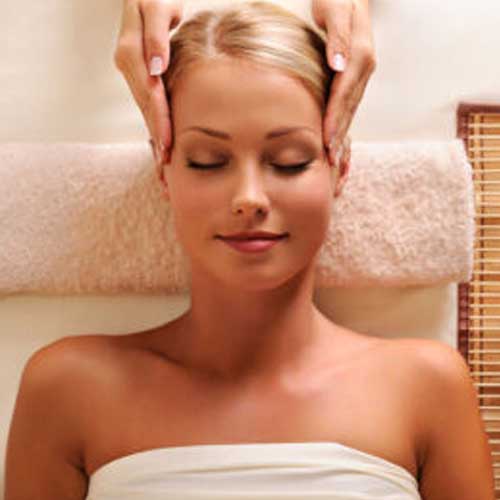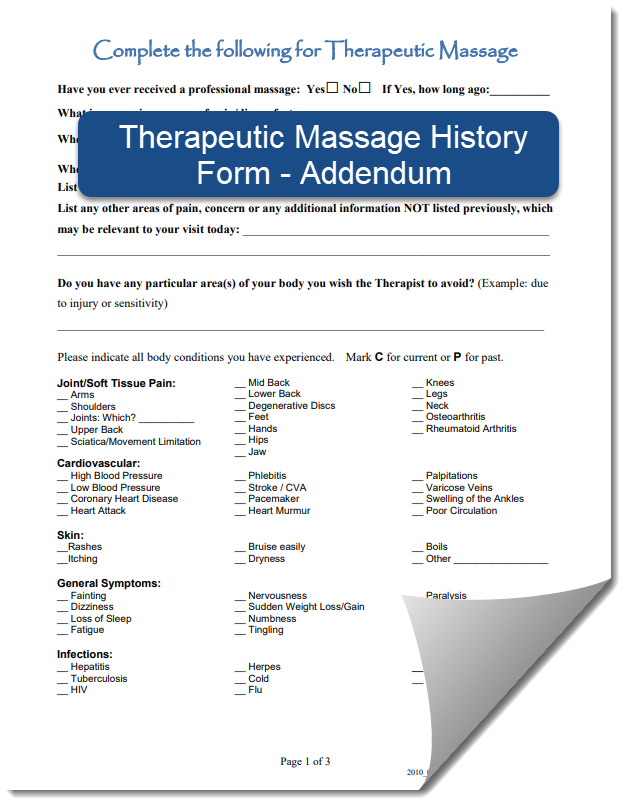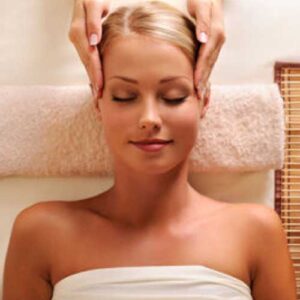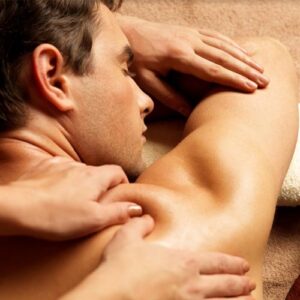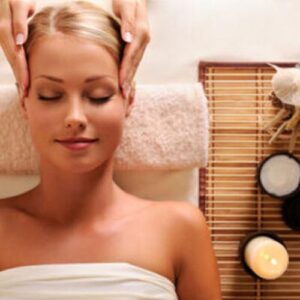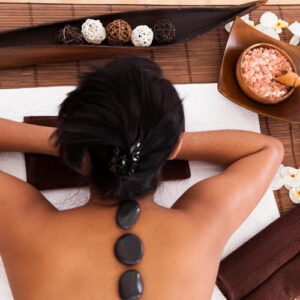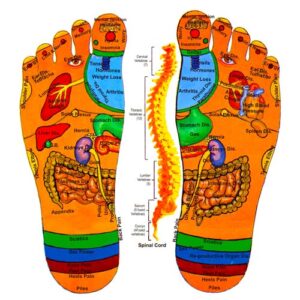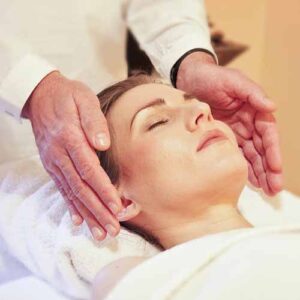Therapeutic Massage
What is true Therapeutic Massage?
Anyone can claim to provide massage, but at Atlanta Colonic & Massage, all of our providers are professionally licensed massage therapists with years of training and experience. Massage is one of the oldest, simplest forms of healing, and is a system of various types of touch therapies which manipulate the body to relieve pain, relax and tone the soft tissues (muscles, tendons, and ligaments). We offer a wide variety of specialty and custom massages.
At ACM you can receive a personalized integrated massage session designed to relax your mind and body for as little as 15 minutes or as long as 2 hours. Each session includes the Bio-Mat at no extra cost.
We offer a truly unique and customized experience dependent on each clients needs.
Why Massage?
In keeping with the theme of restoring the lost art of cleansing, we at the Atlanta Colonic & Massage feel there is no denying the power of massage.
“As a cancer survivor, I can attest to what experts claim; 90% of disease is stress-induced.“
Our body’s natural cycle is disturbed by trauma, stress, and unhealthy diets and lifestyles. Massage is more than pampering oneself, it can:
- Alleviate low-back pain and improve range of motion.
- Assist with shorter, easier labor for expectant mothers and shorten maternity hospital stays.
- Ease medication dependence.
- Enhance immunity by stimulating lymph flow—the body’s natural defense system.
- Exercise and stretch weak, tight, or atrophied muscles.
- Help athletes of any level prepare for, and recover from, strenuous workouts.
- Improve the condition of the body’s largest organ—the skin.
- Increase joint flexibility.
- Lessen depression and anxiety.
- Promote tissue regeneration, reducing scar tissue and stretch marks.
- Pump oxygen and nutrients into tissues and vital organs, improving circulation.
- Reduce post-surgery adhesions and swelling.
- Reduce spasms and cramping.
- Relax and soften injured, tired, and overused muscles.
- Release endorphins—amino acids that work as the body’s natural painkiller.
- Relieve migraine pain.
Because high stress ages us faster internally and externally, massage therapy can be a powerful ally in your wellness program. While living in a stress-free world is unrealistic, studies have shown massage helps decrease anxiety, enhance sleep quality, reduce fatigue, improve concentration, and increase circulation. Massage therapy has also been known to have intangible benefits as well, such as a sense of perspective or a balance of emotions.
Your First Visit
When you arrive, you will be escorted to a private massage room where the therapist will review your history, to determine specific needs and answer any questions. You will be asked if you have any particular problem areas that need attention so these areas can be addressed during your session. You will be instructed to remove all jewelry, disrobe at your level of comfort, and lie face up under the sheets on the table. The therapist will leave the room during this time to prepare for your session. You will hear a gentle knock at the door as your therapist re-enters the room. After the session, the therapist will leave the room for you to dress. You will be asked to open the door slightly when finished so the therapist can use the privacy of the room to inquire how your experience was and answer any questions. During this time your therapist will suggest ways to maximize the benefits of your session. People have experienced improved benefits from their massage sessions after using the Far Infrared Sauna, so you may want to ask about our special packages.
- Arthritis sufferers note fewer aches and less stiffness and pain.
- Asthmatic children show better pulmonary function and increased peak air flow.
- Burn injury patients report reduced pain, itching, and anxiety.
Our body’s natural cycle is disturbed by trauma, stress, and unhealthy diets and lifestyles. Massage is more than pampering oneself, it can:
Alleviate low-back pain and improve range of motion.
- Assist with shorter, easier labor for expectant mothers and shorten maternity hospital stays.
- Ease medication dependence.
- Enhance immunity by stimulating lymph flow—the body’s natural defense system.
- Exercise and stretch weak, tight, or atrophied muscles.
- Help athletes of any level prepare for, and recover from, strenuous workouts.
- Improve the condition of the body’s largest organ—the skin.
- Increase joint flexibility.
- Lessen depression and anxiety.
- Promote tissue regeneration, reducing scar tissue and stretch marks.
- Pump oxygen and nutrients into tissues and vital organs, improving circulation.
- Reduce post-surgery adhesions and swelling.
- Reduce spasms and cramping.
- Relax and soften injured, tired, and overused muscles.
- Release endorphins—amino acids that work as the body’s natural painkiller.
- Relieve migraine pain.
- High blood pressure patients demonstrate lower diastolic blood pressure, anxiety, and stress hormones.
- Premenstrual syndrome sufferers have decreased water retention and cramping.
- Pre-term infants have improved weight gain.
As one massage is beneficial, taking part in regularly scheduled bodywork can play a huge part in how healthy you’ll be and how youthful you’ll remain with each passing year. Budgeting time and money for bodywork at consistent intervals is truly an investment to your health.
Research continues to show the enormous benefits of touch—which range from treating chronic diseases, neurological disorders, and injuries, to alleviating the tensions of modern lifestyles. Consequently, the medical community is actively embracing bodywork, and massage is becoming an integral part of hospice care and neonatal intensive care units. Many hospitals are also incorporating on-site massage practitioners and even spas to treat post-surgery or pain patients as part of the recovery process.
Web Source: MassageTherapy.com
History of Massage
Writings on massage have long been found in ancient civilizations such as Rome, Greece, Japan, China, Egypt, and India. A Chinese book from 2,700 B.C., The Yellow Emperor’s Classic of Internal Medicine, recommends ‘breathing exercises, massage of skin and flesh, and exercises of hands and feet” as the appropriate treatment for -complete paralysis, chills, and fever.” The ancient Hindus, Persians and Egyptians applied forms of massage for many ailments, such as weight reduction, sleep aid, relaxation and fatigue. It was one of the principal methods of relieving pain for Greek and Roman physicians. Julius Caesar was said to have been given a daily massage to treat neuralgia. Greek soldiers were given regular massages to ease pain and fatigue during training, as well as before and after tournaments. Hippocrates wrote papers recommending the use of rubbing and friction for joint and circulatory problems. It was from this history that in the early 1800s the Swedish doctor, gymnast and educator Pehr Henrik Ling developed a method of movement known as the “Swedish Movement System”, which created the foundation for numerous types of massage recognized today.
More Info:
FAQs
Will the therapist be present when I disrobe?
- The practitioner will leave the room while you undress, relax onto the table, and cover yourself with a clean sheet.
Will I be covered during my session?
- You will be properly draped at all times to keep you warm and comfortable. Only the area being worked on will be exposed.
What parts of my body will be massaged?
The extent of a massage will depend on several factors, including the length of the session, the specific need for treatment, the techniques used, and the client’s comfort level with touch. When there is an injury or condition to be addressed, the entire session may focus on a single area. There may also be a need for treatment of other body areas that are affected by an injury, such as when a sprained ankle forces the opposite leg to bear all the stress of walking and weight-bearing. When a massage is sought for relaxation, you and the practitioner will discuss the desired outcome of your session. This will determine which parts of your body require massage. A typical full-body session will include work on your back, arms, legs, feet, hands, head, neck, and shoulders with the abdomen and/or gluteus/hip area as optional. You will not be touched on or near your genitals (male or female) or breasts (male or female). If you are uncomfortable with being massaged in any area, just inform the therapist of your wishes and the therapist will adjust the massage accordingly.
Does massage hurt?
In the course of a massage, the therapist will probably find areas of tenderness or pain. The level of pain will depend entirely on the therapist’s techniques. Receiving massage strokes in tender areas often creates a very satisfying sensation of “good pain.” If, however, a client has to hold their breath, furrow their brow, or tense their body to endure the pain, they need to ask the therapist to decrease the pressure or try a different technique. Severe pain triggers the release of stress hormones into the bloodstream, which is hardly the goal of massage therapy. Some massage techniques involve deep pressure that can be very painful, yet they have long-term benefits that may outweigh the short-term discomfort. A professional therapist will always explain the benefits of painful procedures and allow the client to accept or decline such procedures.
What should I do during my massage session?
Make yourself comfortable. The practitioner will either gently move you or tell you what is needed throughout the session (such as lifting your arm). Many people just close their eyes and completely relax. Others like to talk during their session. Feel free to ask the practitioner questions about massage in general or about the particular technique you are receiving.
Where will my massage session take place?
The environment is important to the massage experience. Your massage session will take place in a warm, comfortable, quiet room. If the desired experience is to be relaxing, then having low-level lighting, soft music, and a pleasing aroma all add to the effect.
Do We have a Code of Ethics?
Yes, they are as follows;
- We provide the best quality care to anyone that seeks professional help.
- We accept all clients without discrimination.
- We acknowledge the confidential nature of the professional relationship with a client and respect each client’s right to privacy.
- We practice only the modalities in which the therapists have been professionally trained and certified.
- We in no way participate or engage in any type of sexual activities with a client.
- We maintain a safe, clean and professional environment.
How many types of massage exist?
Dozens of massage styles exist. The exact style is not as important as the intention of the massage therapist. Know what results you want (relaxation, pain relief, injury treatment, better posture, etc.) and choose a massage therapist who intends to get those results.
How does a massage feel?
- Massage on healthy tissue usually feels good. Massage around injured, painful, or tense areas can cause discomfort. Tell your massage therapist how much discomfort you are willing to tolerate. NEVER let a massage therapist work deeper than you are comfortable with.
- Deep tissue or injury treatment massage may leave you feeling sore for a day or two. Always let your massage therapist know how you felt, so he or she can adjust the massage as needed.
- During a massage, you may notice that your muscles are sore, even though you had not noticed soreness before the massage. Here’s why: Each cell in your body, including muscle cells, is a tiny factory that takes in nutrition, produces energy, and outputs waste products. For example, contracting muscle cells require an energy source called ATP, which produces lactic acid. Muscles also burn oxygen, which produces carbonic acid, and protein, which produces uric acid.
- If your body and circulatory system are working at peak efficiency, these waste products are flushed out of your body. However, often things aren’t working as well as they could because of stress, tension, too little exercise, too much exercise, medical conditions, and other factors. Then waste products (all that acid!) build up in your muscles, creating congestion that causes pain on the touch. Massage, of course, helps clear out that congestion.
Why does a massage therapist ask about my medical history and medications?
- A responsible massage therapist will ask about your medical history (including a basic health intake form). Although massage has many wonderful benefits, it is not appropriate for those with certain medical conditions, and should only be utilized as appropriate.
- For example, massage is not recommended if you have a condition involving infection (including cold or flu) because massage might help the infection spread through your body. Massage is also generally not recommended for people with advanced heart, kidney, or liver problems. Other conditions that affect circulation, such as high blood pressure or diabetes, require caution, depending on your overall physical condition.
- Obviously, you should not receive massage if you have a contagious condition. If you have a skin rash, know what it is before your massage, because some skin conditions are contagious.
- Medications, particularly pain-killers and muscle relaxants (including aspirin), dull your perception of pain and pressure—your massage therapist needs to know your perception may not be accurate to avoid inadvertently using too much pressure.
- Information about injuries, traumas, surgeries, and physical activities provide information about where or how you hold tension in your body. Also, specific massage techniques can help the body heal soft-tissue injuries. If you have back pain or certain digestive problems, abdominal massage can be helpful, but it is not appropriate for some medical conditions. Your massage therapist needs to know your complete and up-to-date medical picture to provide informed and safe massage. Be assured that all medical information is confidential.
What is a trigger point?
- A trigger point is a tiny area of irritation in a stressed muscle. Trigger points refer pain, weakness, or numbness to either surrounding or distant areas of muscle tissue. The key clue pointing to a trigger point is that applying pressure to a specific point causes you to feel pain or another sensation someplace else. Trigger points result from trauma, exposure to cold or infection, overuse, misalignment, or chronically contracted muscles.
What are the effects of chronic muscle tension?
- Chronic muscle tension inhibits circulation, which means your muscles (and other tissues) aren’t receiving the nutrition they need and waste products aren’t being taken away. The lack of nutrition and toxic buildup of waste irritate nerve endings, resulting in weakness and pain. This toxicity also taxes your immune system.
- Chronic muscle tension also inhibits movement. Movement is accomplished by paired groups of muscles alternately contracting and lengthening to move the bones to which the muscles attach. Chronically tense muscles disrupt the symmetry of balanced forces acting on the skeleton, holding bones out of position and causing misalignments. For every chronically tight muscle, its opposite (the antagonist) is chronically stretched and weak. These unbalanced forces also cause ligaments to become strained as they try to brace misaligned joints. All this makes injury more likely.
- Chronic muscle tension also uses up energy, so you fatigue more easily.
How long do the effects of massage last?
- The duration of the effects of a massage vary greatly from person to person depending on your physical and mental condition, activities, ability to relax, and ability to heal. If you are receiving massage to help heal injury or to get rid of chronic pain, you usually need to receive weekly massage until you reach that goal.
How often should I receive massage?
- If you are receiving massage for prevention, health maintenance, or just to feel better, you have more leeway in how often you receive massage. The effects of regular massage are cumulative. A massage every week or two can make a big difference in your overall health and tension levels. Even a monthly massage is beneficial. Make regular massage part of your health maintenance program (along with good nutrition and exercise), and you’ll feel better.
- Schedule a massage before or after your colon hydrotherapy session. There are advantages to both courses of therapy. Massage stimulates circulation in the body and stirs up metabolic wastes which appear to be readily removed by colonics or Ionic Foot Spa.
Intake & History Forms
Contraindications
Contraindication (not indicated) means that something is not in the best interest of the client regarding their health. Massage is not to be used on any open wound, any infection, during a fever, with inflammatory disease (during a flare-up) or when the client is under the influence of drugs or alcohol. Local contraindication is when you can have a massage but the area affected should be left untouched by hand or lubricant. These can be cuts, blisters, deep bruises or varicose veins. Be sure to point these out to your therapist. Systematic contraindication is when massage should not be given. This can be contagious skin disorders, parasites or diseases that are in their inflammatory stage. If you have any suspicious lesions (rashes, unexplained blisters) or physical issues that you are unsure of, please see a doctor before booking your massage for the safety of yourself and, in the case of contagious disease, your therapist.
- Does a contraindication mean massage cannot take place? Not always. In fact, massage can be very therapeutic for many medical conditions. However, in the above cases it is best to have advice from your physician. Massage therapists, unless they are also qualified doctors, may not, under law, attempt to diagnose a condition.
- Medical Edema: The question here is what is causing the edema. Edema, or swelling tissues from lymphatic fluid, might indicate several dangerous conditions, including heart failure or a deep-vein thrombosis. DVT, a blood clot in a vein (usually in a leg), can suddenly shift and lodge in the lungs (called a pulmonary embolism), to the brain (causing a stroke), or to the heart (causing a heart attack). All of these need immediate medical attention.
- Nervous/psychotic conditions: Massage can be okay, if the person is in a stable condition. An unstable person might need to be under medical supervision, not on your table. Massage is actually a great adjunct to medical treatment for depression, anxiety, and other conditions. There are a few considerations for some of the medications people might be taking.
- Trapped or pinched nerves: The danger here is further injury to the nerve or the problem that caused it in the first place. We cannot know where in problem is nor what might aggravate it. And really, massage would be more appropriate after the problem has been healed, to help the tension and stiffness that the nerve caused.
- Inflamed nerve: Similar to the pinched or trapped nerve. Massage brings more fluid to the area, and this might aggravate the nerve. Ice might be a better alternative, with a doctor’s supervision, with massage afterwards.
- Bell’s Palsy: Bell’s Palsy is partial facial paralysis, caused by an inflamed facial nerve. While it does go away with little to no ill effects, the cause needs to be determined by a doctor. Usually it is idiopathic (basically, “We have no idea what causes it”). It could also be uncomfortable for the person to get massaged, since they are not in a normal state.
- Asthma: Massage is fine for people with asthma, unless they are having a severe attack or if it might trigger an attack. Some massage techniques, like stripping the intercostals and CRAC stretches, and for some actually reduce the need for inhalers.
- Epilepsy: Again, if well treated, massage should be fine. The doctor would be the one to determine if massage is suitable for the person. There is always a chance of the client having a seizure, and can be both frightening and dangerous.
- Recent operations: Massage can be very taxing on a healing body, especially if recovering from a large operation. There is always the chance of infection, for both of you, especially if the incision is still healing. You could also irritate the site by working too close to it. And generally, if the scab has fallen off, and the cut is no longer open, massage should be fine, as long as care is taken around the incision site. But again, the doctor should be contacted, especially if it was for something major, like heart problems or cancer treatment. There might be other underlying health problems that need to be taken into consideration.
- Fever: When you have a fever, your body is trying to isolate and expel an invader of some kind. Massage increases overall circulation and could therefore work against your body’s natural defenses.
- Inflammation: Massage can further irritate an area of inflammation, so you should not administer it. Inflamed conditions include anything that ends in –itis, such as phlebitis (inflammation of a vein), dermatitis (inflammation of the skin), arthritis (inflammation of the joints), and so on. In the case of localized problems, you can still massage around them, however, avoiding the inflammation itself. As well as, 24 to 48 hours after any type of anti-inflammatory treatment.
- High blood pressure: High blood pressure means excessive pressure against blood vessel walls. Massage affects the blood vessels, and so people with high blood pressure or a heart condition should receive light, sedating massages, if at all.
- Infectious diseases: Massage is not a good idea for someone coming down with the flu or diphtheria, for example, and to make matters worse, you expose yourself to the virus as well.
- Hernia: Hernias are protrusions of part of an organ (such as the intestines) through a muscular wall. It’s not a good idea to try to push these organs back inside. Surgery works better.
- Osteoporosis: Elderly people with a severe stoop to the shoulders often have this condition, in which bones become porous, brittle, and fragile. Massage may be too intense for this condition.
- Varicose veins: Massage directly over varicose veins can worsen the problem. However, if you apply a very light massage next to the problem, always in a direction toward the heart, it can be very beneficial.
- Broken bones: Stay away from an area of mending bones. A little light massage to the surrounding areas, though, can improve circulation and be quite helpful.
- Skin problems: You should avoid anything that looks like it shouldn’t be there, such as rashes, wounds, bruises, burns, boils, blisters, and frostbite, for example. Usually these problems are local, so you can still massage in other areas.
- Cancer: Cancer can spread through the lymphatic system, and because massage increases lymphatic circulation, it may potentially spread the disease as well. Simple, caring touch is fine, but massage strokes that stimulate circulation are not. Always check with a doctor first.
- Other conditions and diseases: Diabetes, asthma, gynecological infections, heart problems, angina, those with pacemakers, any condition already being treated by a medical practitioner, and any other serious conditions each has its own precautions, and you should seek a doctor’s opinion before administering massage.
- HIV infection: Some still think AIDS can be “caught” through simple casual skin-to-skin contact, but most of us know that’s not the case, without an exchange of some type of bodily fluid (blood, semen, vaginal fluids, or mother’s milk). So, massage for an HIV positive condition is not contraindicated. However, some infections associated with and occurring in the later stages of AIDS cause massage to be contraindicated. Loving, soothing contact is extremely important for people at any stage of infection. Know that we take the safety and wellness of our clients seriously at all times.
If you do not have any of the listed contraindications and would like to make an appointment, please click the Online History form below.


